Kite-flyers in Singapore battle tightening spaces, lack of interest to keep their passion aloft
Kite-flying enthusiasts in built-up Singapore are fighting against dwindling spaces and a lack of interest to keep the hobby alive in a country where kites used to litter the sky.
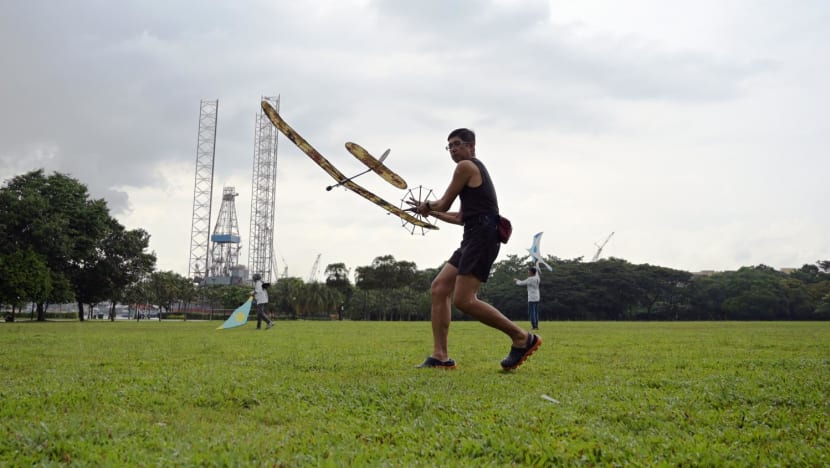
Mr Erich Chew from the Singapore Kite Association flying his "windless" kite at West Coast Park. (Photo: CNA/Marcus Mark Ramos)
SINGAPORE: Gone are the days where children from kampungs ran in lalang fields battling each other’s cheap kites with lines coated with glass.
The glass that litters Singapore’s skyline now comes from the jagged edges of skyscrapers, and the laws in force from as far back as 1969 mean that kite-flying is not allowed in many popular parks – unless you intend to apply for a permit from the Civil Aviation Authority Singapore (CAAS).
This permit is processed in coordination with government agencies like the Republic of Singapore Air Force (RSAF).
The open heartland fields that families used to take their children to in order to skim a loose kite on the wind have been gradually taken up by hospitals, malls and housing developments in urban Singapore, where every inch of open space is jostled for.
Kite-flying enthusiasts that CNA spoke to shared about their deep love of the sport, how they went from open space to open space to continue hoisting their kites, and the obstacles they battle – including the perceived lack of interest from the general public, sponsors and the Government.
Nearly all the enthusiasts interviewed said their love for kites came when they were trying to help their child, nephew or niece fly a kite, and it turned into a passion of their own instead.
Mr Michael Gan, a 64-year-old retired warrant officer from the RSAF, reminisced about being a child in the 60s, when kite-flying was seen in many more places in Singapore.
"The whole sky was filled," he said, adding that people flew kites 24 hours a day at Marina South. They wore long sleeves and tights, and flew their kites through the night.
"Last time in Singapore, every year, there's a season," he said. "There's always a season for marbles, a season for picture cards."
But kites were "in" all year long, he said. He used to follow his uncle who made his own kites, and developed a love for the hobby.
Many people flew fighting kites or glass-coated kites then. But restrictions against these kites came after accidents where people were cut, he said.
Signs were put up at Marina South then warning people that there was kite-fighting going on, but accidents still happened, Mr Gan said.
LOCATION, LOCATION, LOCATION
A check of the map on CAAS' website shows large swathes of spaces in Singapore where kite-flying is not allowed, unless one has a permit. Areas where kite-flying is allowed within height limits include Marina Barrage, West Coast Park and Bishan Park.
Kite-flying without a permit is not allowed in places like Sembawang Park, Punggol Waterway Park, Pasir Ris Park and parts of East Coast Park.
Co-founder of hobby group Show Kites Singapore Johnny Yap, 48, said that space is the main struggle kite-flyers face.
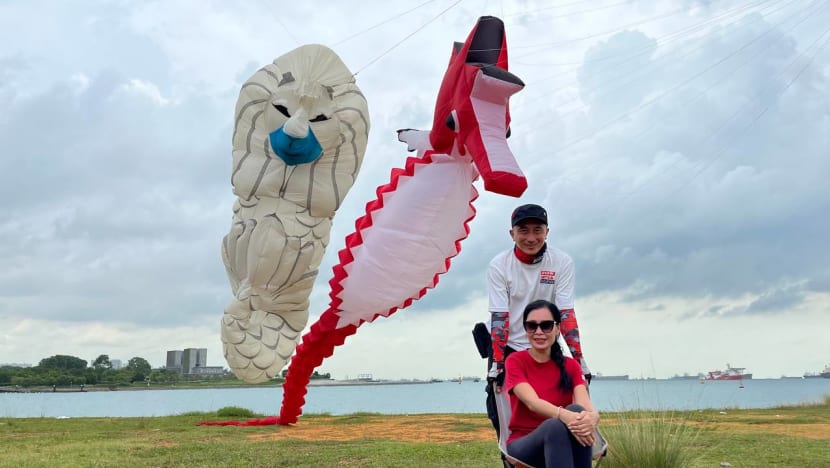
He pointed to the field at Marina Barrage and said it used to be quite big, but then car parks were built.
"It's always they need to reclaim the field for future development. We started flying in Sengkang field, which is now Sengkang General Hospital," he said.
"There're many fields in Singapore that are very nice to fly but have to give way to future development, so we are really struggling with space."
However, he conceded that as Singapore is such a small country, it is "impossible" for the Government to provide an empty field "just to fly kites".
"It's our hobby, our passion and that's something we have to live with. Now we have this little field here. Maybe next month, you never know, it becomes a car park again, then you have to go look for another field to fly," he said.
Mr Yap, a project coordinator at a crane company, has been flying kites almost every weekend for more than 12 years with his wife, co-founder Maggie Mok.

Ms Mok said they started flying kites about 15 years ago, when their family passed by an area in Tampines where a man was selling little kites with spools.
They bought one and the seller told them there was a place where "everybody" was flying kites in Sengkang, and they went there.
"That was our first flying field," recalled Ms Mok, referring to the land on which Sengkang General Hospital now stands.
She described how they searched around Singapore for suitable fields over the years, going to places like Punggol and Tuas.
President of the Singapore Kite Association, Mr Wing Hong Lee, 66, said the association organised kite-flying events in 2008 and 2009 in an open field opposite Oasis LRT in Punggol, with CAAS approval.
The field is now occupied by apartments. In 2010, Singapore Kite Day was held in a vacant field along Punggol Field Walk, but it now houses FLO Residence and Waterwoods condominiums.

However, Mr Lee, who used to work at Singapore Airlines doing corporate flight planning, is more optimistic about the situation.
He said that while spaces disappear, new ones pop up.
"We are waiting for Paya Lebar Airbase to move to a new location," he said. "This will free up so much more new space for kite-flying and we hope to be able to fly kites on runways of Paya Lebar when the airbase begins their move to their new location."
"So open spaces are slowly disappearing, but we see the potential of opportunities in the future for new open spaces when the airbase at Paya Lebar starts their relocation, new space created by the Greater Southern Waterfront and future reclamation of the East Coast area."
CAAS’ APPROACH TO KITE-FLYING LEGISLATION
Mr Sidney Koh, director of airspace policy at CAAS, told CNA that kites must be flown only within allowable areas and height limits. A permit to fly kites is required if kites are flown outside the allowable areas and height limits.
There are also some areas where kite-flying is prohibited at all times, such as the vicinity of the cable car system between Mount Faber and Sentosa, he said.
He said that CAAS adopts a risk-based approach in formulating legislation for the conduct of aerial activities in Singapore.
"Given Singapore's busy airspace and urban landscape, aerial activities such as kite-flying must be conducted with due regard to aviation safety," he said.
"If flown near an airport or airbase, kites may distract pilots during take-off or landing and/or be ingested by aircraft engines. This poses a danger to individuals and causes harm to aircraft and property on the ground."
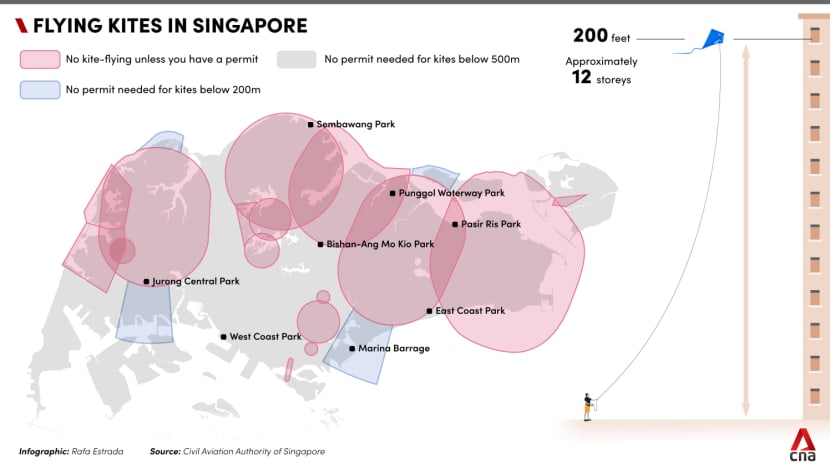
The areas where a permit is required to fly a kite are shown in the OneMap application developed by the Singapore Land Authority. These include areas within 5km of an airport or airbase and restricted or danger areas.
Kites cannot be flown higher than 200ft above mean sea level or about 12 storeys high in areas under aircraft approach paths for Paya Lebar and Tengah airbases up to a distance of 10km from the airbases.
In any other areas, the limit is 500 ft above mean sea level or about 30 storeys high.
Applications for permits for kite-flying are to be submitted online, at least seven days in advance. A permit will be issued only after CAAS is satisfied that the activity can be conducted safely and does not compromise the safety of aircraft operations and people and property on the ground.
THE LAW ON KITE-FLYING AND ENFORCEMENT
According to the CAAS, the law on kite-flying has been in the Air Navigation Order since it came into force on Oct 1, 1969.
Section 64 of the Air Navigation Order lists the rules for a kite to be flown at acceptable heights and forbids it from being flown within 5km of an aerodrome.
The current version of the law states that those who flout kite-flying laws can be fined up to S$20,000 for the first offence. Repeat offenders can be fined up to S$40,000, jailed for up to 15 months, or both.
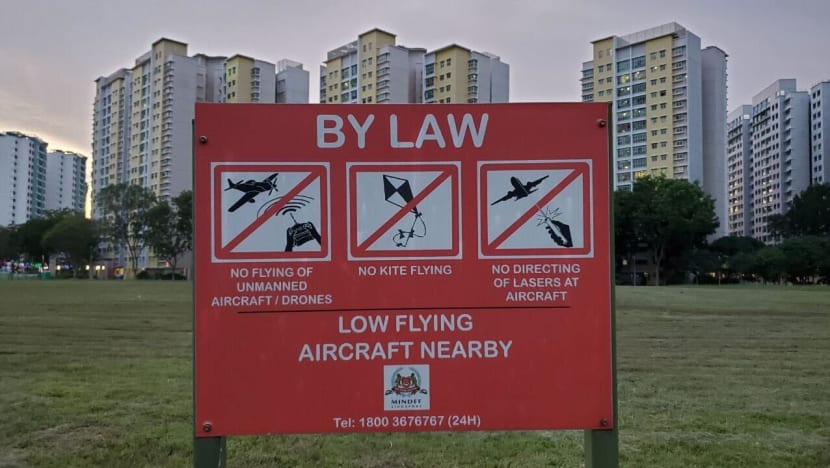
However, some kite-flying practitioners said that this is not usually enforced, if certain precautions are taken such as ensuring that the kites are flown at low levels such as below tree lines in parks. Even if a passer-by calls the police, the police will simply tell them to keep their kites and move on.
Hobbyist Tommi Chan, 49, who runs a roving antique furniture restoration business and has been flying kites for 12 years, told CNA that he ran into trouble with the law about eight to nine years ago.
He was flying a triangular Delta kite that was about 5m to 6m wide in Yishun with a friend. Ignorant of the law at the time, he flew the kite up to about 500m and someone complained.
The police came and told him that he was not allowed to fly there and it was dangerous. However, no further action was taken.
WHY DO THEY STILL DO IT?
Despite the obstacles they face, kite-flyers continue to take to ever-darkening skies. Why do they do it?
RSAF retiree Mr Gan said: "If I fly a kite and put it in your hand, the first thing I will see, you will be smiling. It is a known fact, it is the one thing that actually draws the family."
To him, kite-flying is an art – the aerodynamics, the engineering that goes into it and the design.
Show Kites Singapore co-founder Mr Yap said it's "an adventure every time I fly".
"Like today, you see, it's not every time you have wind, sometimes you have too much wind like now, and every time I fly it's a challenge," he said. "Sometimes our kites eventually drop inside the water and we struggle to get them back up."
His wife, Ms Mok, said kite-flying helps her get to know more about people. It is also gentle exercise, said Ms Mok, who is in remission from multiple sclerosis, an autoimmune disease.
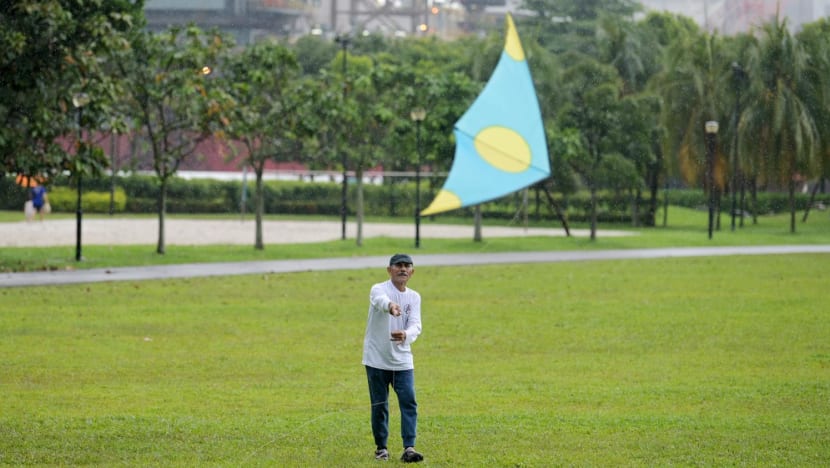
Singapore Kite Association president Mr Lee said he did not give up because he wanted to showcase kite-flying.
During the pandemic, when outdoor group activities were prohibited, his association turned to flying kites by proxy – they launched Video Kite Day, inviting kite-flyers from other countries to send over videos of themselves flying in their own countries.
Hobbyists from about 10 countries sent in their videos, from places like the United States, Australia and Switzerland.
TAKING TO OTHER SKIES
Hardcore kite-flying enthusiasts don’t just fly in Singapore. Fettered by the space and the fact that many of the allowed spaces are bordered by water that is not conducive for flying, they head overseas to take part in exuberant kite festivals.
Some of them go overseas multiple times a year to fly kites in places like Bali, Malaysia and India.
Retired RSAF officer Mr Gan said the events overseas can be very grand. Often, they are held by the state or country in conjunction with other festivals. He gave the example of Taiwan, where a kite-flying event is held in conjunction with a Hakka festival with stalls selling food.
Mr Erich Chew, 54, who has been flying kites for 11 to 12 years, said he goes overseas two to three times a year to fly in big, open spaces.
Mr Chew, who works in IT, said real big-time kite enthusiasts go overseas to fly, because there is "no space" in Singapore.
"Even here, you want to fly, you share the field with others," he said.
He can spend more than S$30,000 to S$40,000 on "big, soft kites". Regular kites with "really good designs" can cost €3,000 (S$4,275) to €4,000, he said.
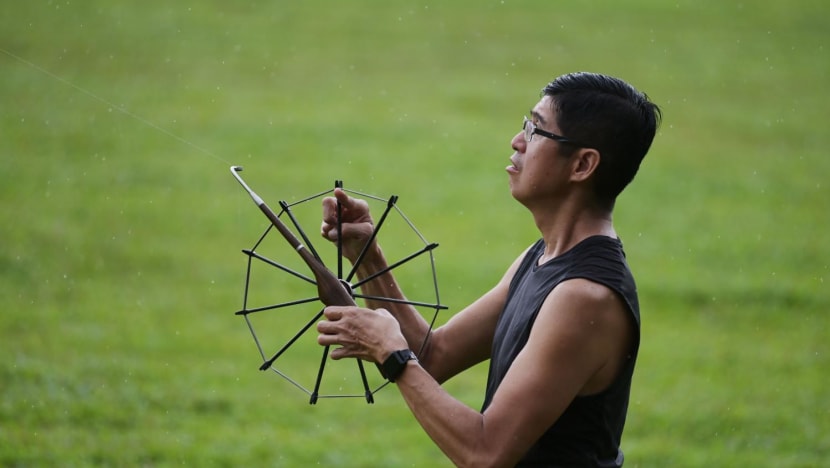
Ms Mok said it sometimes feels disappointing, because she has been promoting kite-flying for Singapore but the Government and Singaporeans do not recognise this sport.
"Children nowadays are so used to gadgets and social media," she said. In countries she has been to, kiting is held up as a hobby and competitive sport. Delegates from other countries flock there and compete in categories such as biggest kite and most creative kite.
The Singapore Kite Day festival was held at Marina Barrage from 2011 to 2018, with the Singapore Kite Association partnering PUB and Marina Barrage, said association president Mr Lee.
But the festival was cancelled due to the pandemic. Sponsors dropped the event, and the festival has not been revived, kite-flyers told CNA.
Mr Lee said he hoped to see more commercial interests promoting kite events, and the return of the annual kite festival.
"Marina Barrage can return to its glory days, where for the past decade it has been the showcase for international kite events," he said.
Mr Yap concurred, saying he hoped that sponsors would take up kite-flying and get the festival running again, to bring more awareness of the sport to the general public and create family bonding.

"What we can do is we fly a kite, then you pass the kite to a child who has never flown a kite before," he said.
"The minute they hold the kite on the line, you can see straight on their face, there's no lie about it, the smile automatically comes out."
He said the only way the future generation will fall in love with kite-flying is if they hold a kite.
"If there's no field, there's no chance."
Read this story in Bahasa Melayu here.














